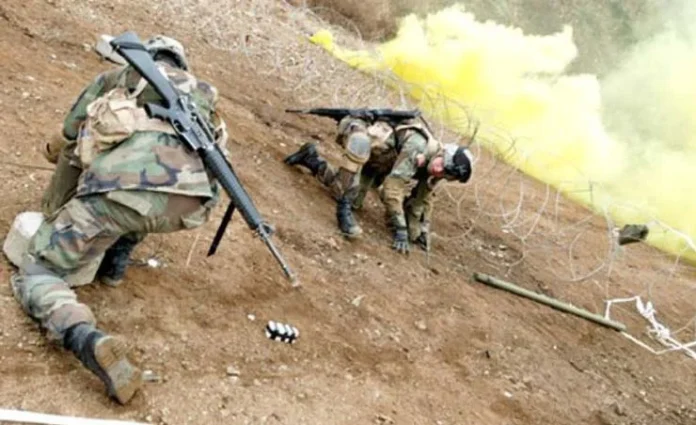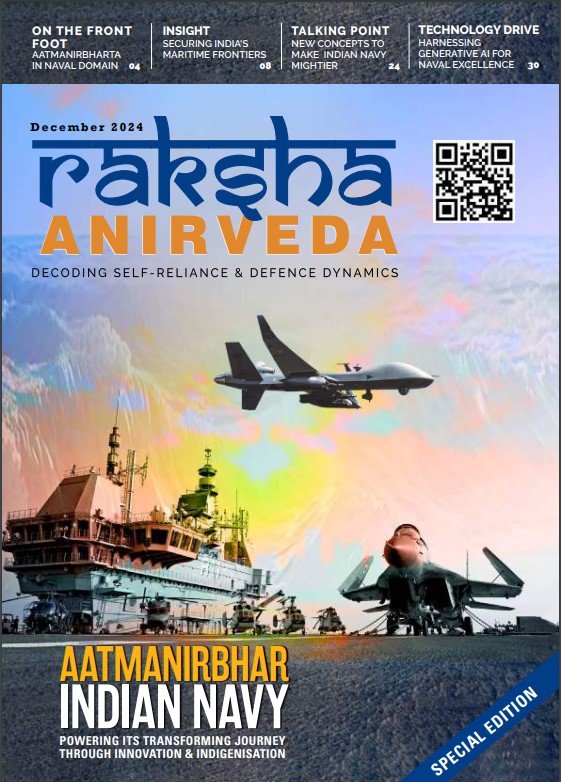An army – anywhere in the world — needs three things — firepower, mobility, and a human will to fight and win against all odds. A professional, trained and motivated soldier can fight any battle, make every bullet count, and change the complexion of the whole battlefield– if only he knows that- the weapon he is carrying will fire and hit the target at exactly the same point where he aims and that too without any deviation or change in the angle, arc or trajectory of fire due to wind speed, weather condition or distance
Imagine the confidence of a soldier who knows that the vehicle in which he is travelling, is as safe, and secure as the Delhi Metro or Ola cab and would not let him down on the way –when he needs it most. Likewise imagine the morale of a soldier who knows that even if his vehicle breaks down, anytime in the day or night, he is in safe hands, and there are capable people who can virtually solve all his problems — in the most proficient manner, and the least possible time.
Any soldier who goes to war can fight gallantly and create havoc in the enemy camp if he believes that his weapon is properly calibrated and maintained and will not let him down. Can you imagine the morale of a soldier inside a bunker, tank or BMP which no bullet or bomb cannot penetrate, who knows that the magazine of his gun will not jam; due to moisture, cold, heat, dust or any such adverse weather condition?
IMPORTANCE OF EME
The Corps of Electronics & Mechanical Engineers (EME) ensures that each and every — weapon or equipment, night vision and optical device in the Indian Army are calibrated and maintained to work perfectly – when needed. EME is the key that can open all doors… EME repairs, maintains and overhauls everything the Army uses. This is the importance of EME today or in any ‘techno-mobile’ battlefield in the future.
EME maintains a number of small but efficient teams in the remote and hostile areas along the Line of Control in Kashmir, Siachin and Dras the second coldest inhabited place on Earth. At times, when others may not like to take off their coat or gloves – EME officers, JCOs or Jawans voluntarily take off their warm clothes to go under a vehicle, to identify the problems, and supervise or repair the breakdown equipment without bothering about the extremely cold, chilling temperature or high-speed winds.
EME’s ethos and spirit are reflected in its motto– ‘Karam Hi Dharam’ or ‘work is worship. Even their previous motto, ‘Omnia Facimus’ means – ‘We can do everything in English. EME officers and men have a can-do attitude and belief that they are second to none. They believe in two things- nothing is impossible and no gains without pain. This is the secret behind their success and motivation. They believe that nothing works until you make it work – so they always keep trying to make things work. Hence, instead of waiting for things to happen, they make things happen or so to say don’t wait for the next rain to have a bath…
EME has a vital role play to keep the Army moving in any war or peacetime. Till World War I (1914 – 1918) there were no regular units to repair and maintain the guns and equipment in the British Indian army —under enemy fire in the forward areas. Soon mobile workshops were set up to recover and repair break-down (damaged) vehicles or machines or send them to bigger workshops in the rear. Later the Royal Army Ordnance Corps (RAOC) was established in 1918. The ROAC was renamed the Corps of the Royal Electrical and Mechanical Engineers in World War II. They were both — expert engineers or technicians, as well as combat soldiers. A few years later –R– or Royal was replaced by I – for Indian. Soon even the ‘I’ was dropped and it was renamed the Corps of Electrical and Mechanical Engineers (EME). In 2001 the word Electrical was replaced by Electronics and the Corps came to be called the Corps of Electronics and Mechanical Engineers.
The EME badge has a horse, chained to the globe and flashes of lightning on both sides– Ashoka lions on top and the words ‘Karm Hi Dharam’. The globe in it symbolizes – a widespread or global perspective. The chained horse is symbolic of mechanical power, while the lightning flashes represent the fast aggressive and unrestricted flow of electrical energy. The EME flag has tri-colour bands– Oxford blue –for devotion to duty, Golden Yellow –signifying nobility and intelligence, and Scarlet– which implies gallant, and sacrifice. The EME Corps song is based on the tune “LILLI-BURLERO”. Every EME officer or jawan is a trained combat engineer or technician and a go-getter, or backbone on which the Army depends in any conventional war or irregular war, or war-like situation in any battlefield or theatre of operation– from Kashmir to Kanya Kumari, Siachin to Somalia.
Be it at work or playground – many EME personnel like flying Sikh Milkha Singh, or Major HPS Ahluwalia — the first Indian to climb Mount Everest–have made a name for themselves at the national and international level in mountaineering, athletics, sailing, rowing, wrestling, kabaddi, weightlifting hockey, and other sports. EME teams are today the backbone of Maitri – a research station in the subzero temperatures of Antarctica.
EME personnel have the skill and expertise to identify a problem and repair any out-of-order, obsolete or unserviceable object that can fire or move—from a vehicle, computer, simulator, night vision device, helicopter, radar or guided missile to keep the Indian Army battle worthy and ever-ready to fight and win, at all times.
-The writer is a seasoned media professional with over three decades of experience in print, electronic, and web media. He is presently Editor of Taazakhabar News
–The writer is a seasoned media professional with over three decades of experience in print, electronic, and web media. He is presently Editor of Taazakhabar News. The views expressed are of the writer and do not necessarily reflect the views of Raksha Anirveda






